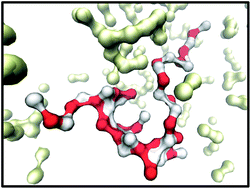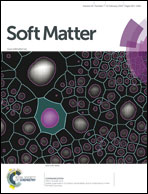Scaling behavior and local structure of ion aggregates in single-ion conductors
Abstract
Single-ion conductors are attractive electrolyte materials because of their inherent safety and ease of processing. Most ions in a sodium-neutralized PEO sulfonated-isophthalate ionomer electrolyte exist as one dimensional chains, restricted in dimensionality by the steric hindrance of the attached polymer. Because the ions are slow to reconfigure, atomistic MD simulations of this material are unable to adequately sample equilibrium ion structures. We apply a novel coarse-graining scheme using a generalized-YBG procedure in which the polymer backbone is completely removed and implicitly represented by the effective potentials of the remaining ions. The ion-only coarse-grained simulation allows for substantial sampling of equilibrium aggregate configurations. We extend the wormlike micelle theory to model ion chain equilibrium. Our aggregates are random walks which become more positively charged with increasing size. Defects occur on the string-like structure in the form of “dust” and “knots,” which form due to cation coordination with open sites along the string. The presence of these defects suggest that cation hopping along open third-coordination sites could be an important mechanism of charge transport using ion aggregates.


 Please wait while we load your content...
Please wait while we load your content...